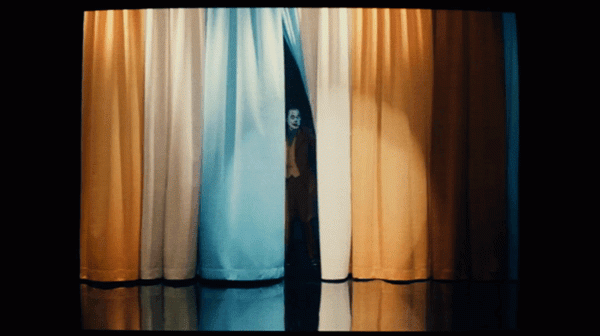Curator's Note
The ever-shifting appearances of the Joker across mediums highlights the plasticity of the character. The instability of the Joker’s image reinforces the incoherent and contradictory backstory that has developed around the figure. That consistent inconsistency is a key factor in why the Joker as a transmedia property is made available to such wide-ranging and contradictory interpretations and functions, as seen in this theme week. Emphasizing the plasticity of the character serves the rhetorical function to render the Joker ahistorical. A way to begin historically grounding the Joker is to view him as an inherently satiric vessel. Satirical discourse begins to lock a Joker into a specific time and place as satire exists as an address within everyday social interactions, otherwise no one would understand the joke.[i] Satire is also the function of specific production cultures and modes of production..[ii] In their live action, cinematic, incarnations a consistent motif has coalesced that sees the Joker take over or co-opt broadcast television to disseminate his criminal threats and impart his satiric discourse in moments of intermediality. These intermedial broadcasts address the audience through the “liveness” of TV, further binding them to specific time, place, and audience understanding.[iii] These moments are captured by the gifs above.

With its arch production design, the Gotham City of Batman (1989) doesn’t appear to be 1980s America. The connection to eighties American culture is secured through the liveness of TV when Joker hijacks an Action News broadcast to display his infomercial for his toxic new product, Smylex. The Smylex commercial derails the film's narrative momentum as it reflexively acknowledges the consumerism that makes the Batman franchise successful regardless of box office returns. The audience becomes the object of mockery for Joker, as they are the machines that perpetuate a culture of conspicuous consumerism even as it lampoons the corporations and medium that enables it. Smylex as a cocktail of beauty products, foregrounds contemporary beauty standards as another vector of critique, transforming the threat into a gendered attack against women and highlighting the apparent failed masculinity Joker represents as he ironically extols his beauty.

In The Dark Knight(2008), the Joker, an anonymous terrorist, taunts the people of Gotham City by releasing video messages to GCN (Gotham City Network). The GCN logo parodies the CNN logo and is part of a constellation of signifiers tying The Dark Knight to the post-9/11moment. Joker’s broadcast threats echo the way CNN and other cable networks frequently broadcasted al Queda messages co-opting their own infrastructure into their propaganda network.[iv]Contextualized by the intermedial use of imagery, the Joker becomes ironically encode as a foreign terrorist revealing the character’s satirical function. With his punk aesthetic and chalk white makeup, a more obvious white face than prior incarnations, he emobides white domestic terrorism. The anarchy the Joker reveals the limited conception of what counts as terrorism and the historical threat of White domestic terrorism in the United States of America.

The 2019 film, Joker, appears to complicate the temporal notions of satire due to its period setting. As well, unlike previous examples the Joker has been invited to appear on TV. During the sequence the film cuts between a “live broadcast” and the diegesis of the film, emphasizing the audience’s complicity. Unlike previous sequences, the extratextual understanding of the Joker as a supervillain is used to satirize our fascination with “bad guys” and linkage of antiheroes and prestige drama.[v] Joker unabashedly, and ironically, quotes the films of Martin Scorsese(Taxi Driver, The King of Comedy); Scorsese films that present a type of protagonist that now looks like the ever more troublesome lone gunman mass shooter. In another twist Joker’s personal acts of violence fail to meet the definition of a mass shooter and rather than being a racist incel, his on-screen victims are all white men who fail to recognize his performance of masculinity. recognize him.[vi]
[i] Paul Simpson, On the Discourse of Satire (Philadelphia: John Benjamins Publishing Company, 2003), 4.
[ii] Johan Nilsson, “Rictus Grins and Glasgow Smiles The Joker as Satirical Discourse,” in The Joker: A Serious Study of the Clown Prince of Crime, ed. Robert G. Weiner and Robert Moses Peaslee (Jackson: University Press of Mississippi, n.d.), 167.
[iii] Elana Levine, “Distinguishing Television: The Changing Meanings of Television Liveness,” Media, Culture & Society 30, no. 3 (May 1, 2008): 393–409, https://doi.org/10.1177/0163443708088794.
[iv] Brigitte L. Nacos, “Terrorism as Breaking News: Attack on America,” Political Science Quarterly 118, no. 1 (2003): 42.
[v] Quentin Tarantino would call this sequence subversive on a “profound level.” Quentin Tarantino on Joker, accessed February 6, 2022, https://www.youtube.com/watch?v=dPNzWsu-M2M.
[vi] It is left ambiguous if Arthur Fleck kills Zoe, and her child, director Todd Philips claims they shot a scene that confirms her survival. It is more clearly implied at the end, however, that he murders his therapist at the end of the film. However neither event appears on screen. - https://www.indiewire.com/video/todd-phillips-cut-zazie-beetz-joker-scen...
Add new comment